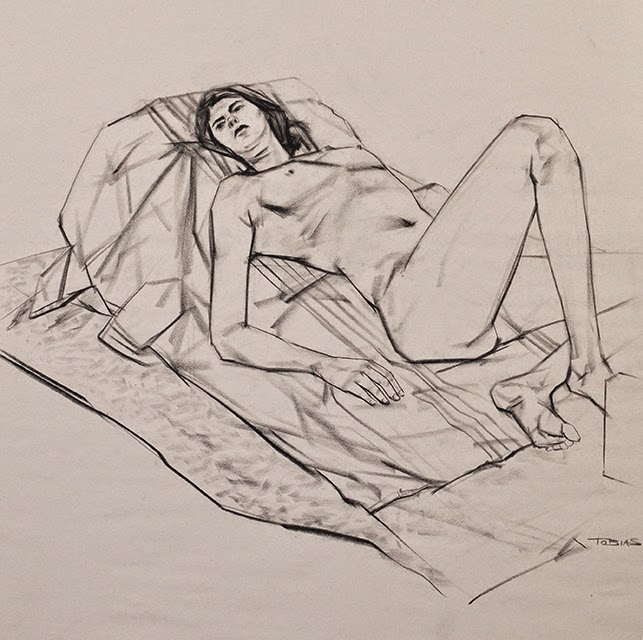Untitled #93
22" X 30"
Charcoal on Paper
2013
In this 40 min. drawing I spent most of my time on attempting to capture the likeness of the model. I left the hair and many aspects of the drawing as mere suggestions. I do this often, and not just because of time constraints, but because I've been a fan of the vignetted composition going back to when I was a kid.
There were two kinds of portraits of George Washington hanging on many classroom walls when I was growing up. The finished version, and the unfinished version. I always found the unfinished version much more fascinating. The exposure of the process in a work of art just seems to affect the senses in a way that "finished" work does not. It's a bit like seeing the face in the vase optical illusion and perceptually going back and forth in your mind between the two objects. Somehow it's endlessly fascinating and gives a work a bit of an interactive element to it; because it requires perceptual participation on the part of the viewer to complete the visual sentences.






